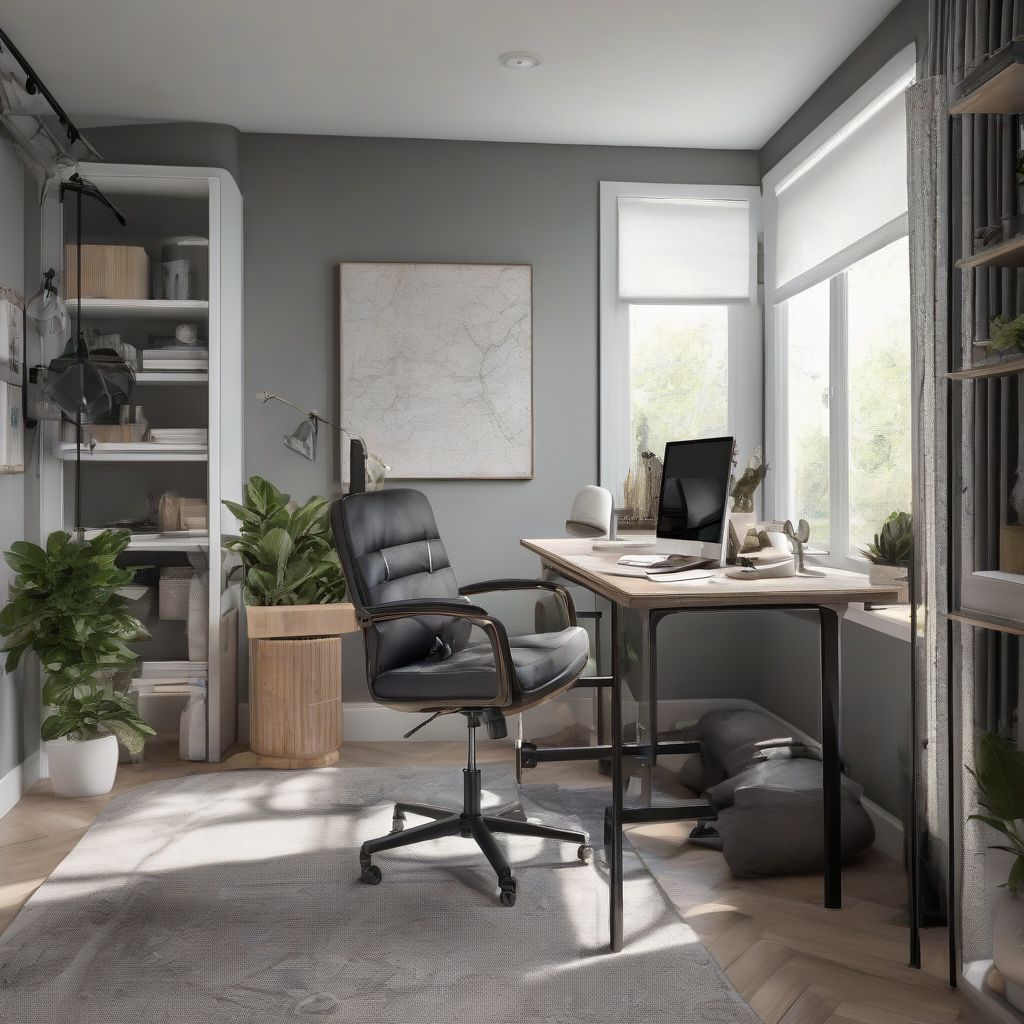Remember those days when “working from home” felt like a luxurious novelty? Fast forward to today, and it’s become a way of life for many. The rise of hybrid work models has blurred the lines between our professional and personal spaces, making a thoughtfully designed home workspace more essential than ever. But what does the future hold for these home offices? Let’s dive into the exciting trends shaping how we’ll work and live in the years to come.
Beyond Functionality: Creating a Sanctuary for Productivity and Well-being
The future of home workspace design is about so much more than just squeezing in a desk and a laptop. It’s about crafting an environment that supports our overall well-being and helps us thrive, both professionally and personally.
1. Embracing Flexibility and Multifunctionality
Gone are the days of the static, single-purpose home office. The future is all about adaptable spaces that can easily shift from work mode to relaxation mode. Think modular furniture that can be reconfigured, foldable desks that disappear when not in use, and room dividers that create dedicated work zones.
 Flexible Home Office Design
Flexible Home Office Design
2. Prioritizing Natural Light and Biophilic Design
Our connection to nature plays a huge role in our well-being, and that’s something we can’t ignore in our home workspaces. Expect to see an increased focus on incorporating natural light, ventilation, and elements of nature. Think large windows with views of greenery, indoor plants, and natural materials like wood and stone.
3. Ergonomics Meets Aesthetics: Comfort and Style Combined
Ergonomics has always been important, but the future takes it up a notch. We’re talking chairs that provide optimal support, adjustable desks that allow for both sitting and standing, and strategically placed monitors to minimize eye strain. But it’s not just about function – these ergonomic elements are seamlessly integrated with stylish designs, creating a workspace that’s both comfortable and visually appealing.
 Ergonomic and Stylish Home Office
Ergonomic and Stylish Home Office
Technology: The Backbone of a Seamless Hybrid Work Experience
Technology is the invisible thread weaving together our hybrid work lives, and its influence on home workspace design will only continue to grow.
1. Seamless Connectivity: The Foundation of Productivity
High-speed internet, reliable Wi-Fi, and ample power outlets are non-negotiables. But beyond the basics, we’ll see a rise in smart home integrations that enhance our workflow. Imagine voice-activated lighting, temperature control, and even coffee makers, all designed to minimize distractions and keep us in the flow.
2. Video Conferencing: Creating a Professional Presence from Home
Video calls are here to stay, making it crucial to create a designated space that’s both functional and visually appealing for online meetings. Expect to see more emphasis on background solutions, adjustable lighting to ensure we’re always camera-ready, and high-quality microphones for crystal-clear audio.
3. Virtual Collaboration Tools: Bridging the Gap Between Physical and Digital
Collaboration is at the heart of hybrid work, and technology will continue to bridge the gap between physical and digital workspaces. Interactive whiteboards, cloud-based project management tools, and virtual reality platforms for immersive meetings – these are just a few examples of how technology will shape the future of collaboration in the home office.
The Human Touch: Creating Spaces that Inspire and Nurture
In a world increasingly dominated by technology, it’s easy to forget the importance of the human element. But the future of home workspace design puts people front and center.
1. Personalization: Reflecting Your Unique Style and Needs
Cookie-cutter home offices are a thing of the past. The future is all about creating spaces that reflect our individual personalities and work styles. Whether it’s incorporating bold colors, showcasing cherished mementos, or creating a dedicated reading nook, personalization is key to feeling comfortable and inspired in our workspaces.
2. Wellness Integration: Prioritizing Physical and Mental Health
The lines between work and life are blurred, making it more important than ever to integrate wellness into our home workspaces. Expect to see more standing desks, yoga mats tucked away in corners, and even meditation apps integrated into our workflows. It’s all about creating an environment that supports both our physical and mental well-being.
3. Bringing the Outside In: Biophilic Design for a Breath of Fresh Air
Biophilic design is more than just a trend; it’s about recognizing our innate need to connect with nature. Incorporating elements like plants, natural light, and even water features can reduce stress, boost creativity, and enhance our overall sense of well-being.
Conclusion: Embracing the Future of Work, at Home and Beyond
The future of home workspace design is an exciting convergence of functionality, technology, and human-centered design. It’s about creating spaces that are flexible, adaptable, and inspiring, allowing us to thrive in a world where work and life seamlessly integrate. By embracing these trends, we can create home workspaces that not only support our professional goals but also nurture our overall well-being.
What are your thoughts on the future of home workspace design? Share your insights and ideas in the comments below!
[amazon bestseller=”desk”]
